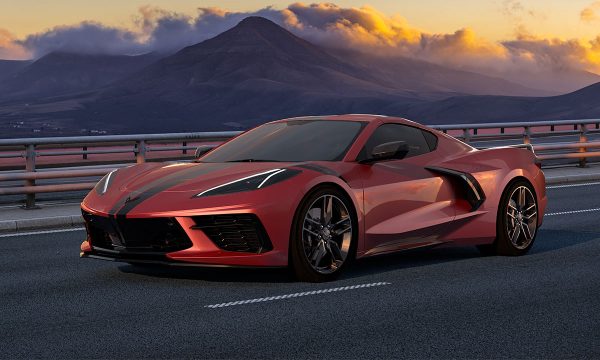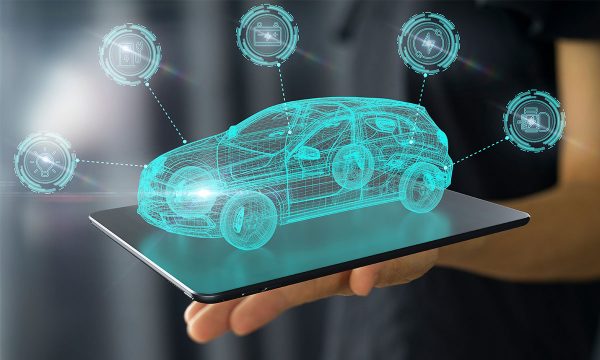 Stop building relationships on leased property — do it on owned property. Starting your conversation and building relationships on social media makes sense, it’s where the buzz is. But there is volatility in building it all on someone else’s property.
Stop building relationships on leased property — do it on owned property. Starting your conversation and building relationships on social media makes sense, it’s where the buzz is. But there is volatility in building it all on someone else’s property.
Best practices and benchmarks for dealership websites and social media activity may prove helpful for your business, but perhaps not as helpful as first addressing the overall question of — why are you doing this?
Why are dealerships putting in the time, money, resources and effort to upgrade and maintain their websites? Or why should they be?
According to Michael Cirillo, Co-founder and CEO of FlexDealer.com, it’s about continuing the conversation; if we liken social media to a movie theatre where you invite all your friends, the dealership website is your house — the place where you continue the conversation.
“How do I get people from where the eyeballs existed or where the conversation started, into an ecosystem that I control?”
— Michael Cirillo, Co-founder and CEO of FlexDealer.com
“We do that in real life all the time. I mean, maybe not in the last year, but that continuation of a conversation that you’re all vibing on as a group of friends, that’s the equivalent of what social media or platforms ought to be where the conversation gets started, where we can connect, where we get to see other like-minded individuals,” said Cirillo in an interview with Canadian auto dealer.
He said social media is where the “eyeballs” are, which is why it is considered to be the gathering place to start conversations and where dealership employees can build relationships. The dealership website is the place that allows the employee to continue to build that relationship with the consumer. And the bridge between the two involves shifting consumers from social platforms to their website.
Now, one could argue that the conversation could easily continue on social media and any information they require could be provided through the chat option, but for Cirillo that shift from social to website is a type of protection — it is about the volatility of building something on leased property.
Take Facebook, for example: with everything that is going on with the social media giant, Cirillo said there is no guarantee when your ads will turn on or off. There is no guarantee when your page will get shut down, or when it will be blocked. And Facebook has sent gentle reminders throughout the years that they are in fact in control.
“Now, I don’t want to paint them as a bunch of awful people. I’ve had the privilege of interviewing Bob Lanham, who’s the head of autos at Facebook, WhatsApp, and Instagram,” said Cirillo. “I’ve also had the privilege of interviewing Lissette Gole, who is the head of autos at Google.These are not evil people, and these are not evil companies. Are they in business to make money? Absolutely. Are they in control of their properties? Absolutely.”
Cirillo said examples of the volatility around leasing and not owning your digital properly has been evident for years. He offered an example of an online magazine that made their income from publishing Facebook videos, but with the click or changing of an algorithm Facebook put them entirely out of business. “They were doing millions of dollars in revenue,” said Cirillo.
But if Google indexes a dealership website and that website no longer appears in the search engine, there are still a number of things the dealership can do because they own the property. Among their options, dealers can drive traffic to their website, run ads, or advertise it — the latter being a key move on the dealership’s part.
According to Cirillo, Amazon is forecasting to spend billions on advertising in 2021. Why is this important? Because even though Amazon is the largest online retailer with billions in revenue, they still understand the importance of taking people from wherever they are on leased land and bringing them to a property that they own and that they control.
“So if Amazon, despite their fame and fortune, and international acclaim, are spending big, big dollars on advertising to get people into their ecosystem, I would suggest that the mom and pop shop, the independent dealership, and the franchise local dealer need to also be thinking in that way,” said Cirillo.
By “that way” he means “how do I get people from where the eyeballs existed or where the conversation started, into an ecosystem that I control?” That is where the thought process should be.
So how can dealerships and their staff move the conversation from the movie theatre to their house? The first thing Cirillo recommends is to “stop talking so darn much about yourself.” Instead, participate in happening conversations on places like social media platforms to get to know people and build a relationship. And importantly, do it during allocated times.

Getting the most out of social media
To better understand how to start conversations and build relationships on social media, Canadian auto dealer reached out to Jeremy Vianna, Head of Automotive at Twitter, and explored what dealerships can do to take advantage of their presence on this particular platform.
The main consideration before diving into any social platform is understanding what each platform has to offer — as in, why do users visit the platform, and what is the platform used for?
“If we just simplify and call dealers marketers, what are they used for by people who are trying to connect with consumers?” said Vianna. “The primary reason is to launch something new and connect with what’s happening, right? Those are why people come to the platform and why marketers use us. So I think when you start to unpack what that can mean, there’s certainly a couple of directions that can go for dealers.”
Vianna said the automotive conversation in Canada is growing and continues to do so on Twitter, which experienced a 40 per cent growth in the fourth quarter of 2020. That growth correlates with what Vianna is seeing in terms of growth across the platform, both in terms of users and volume of conversation. In other words, it remains an active, vibrant place — a type of movie theatre, as Cirillo mentioned earlier, which is where the “eyeballs” are.
So how can dealers connect to these vibrant places and meet their objectives? One example involves the idea of an OEM preparing to launch a new vehicle, and how Twitter partners with them at the brand level to help amplify any message they have going to market, whether it be through hosting live events on the platform (which was done with Ford for its Mustang Mach-E), or to simply drive awareness of various product features (such as with Hummer).
“If I’m a dealer, the question starts to become: ‘how do I lean into that conversation in a good way?’ And it’s worth understanding what a launch is before thinking about how to engage with it,” said Vianna. “When we think about what’s best around a launch, there’s three phases in general that we advocate for; it’s broken down into tease, launch, and sustain.”
The tease and launch phases can be compared to a movie trailer; it’s coming and it’s going to be big. This is the big push to make an announcement and drive awareness of whatever the product is (the new car, the new service, whatever it might be). The sustain part involves driving or enforcing awareness over a certain period of time — and it is this phase where Vianna feels dealerships have a real role to play.
After the brand makes an announcement about the vehicle, Vianna said there is a moment of nuance in that the launch has happened and, from a dealership lens, it is now in the community (in some respects). And because launches create a buzz of conversation on Twitter, dealers will want to engage with it in some way. They can do this by posting “fleeting thoughts” in the form of an ephemeral tweet that only exists for 24 hours.
According to Dominic Sigouin, President and CEO of Noahvik Consultants, the importance of having a well integrated plugin, widget or digital retailing tool installed not just on your website, but also with other tools like a CRM, should not be underestimated.
“The idea there is that there’s a certain sense of timeliness to it. It’s very image driven. And if a dealership has a good following, it’s a way of providing sort of playful and interesting content to build off what the brand is already doing,” said Vianna.
This could mean the dealership is excited about certain features of the vehicle, or that they want to talk about the inventory they have or discuss how it makes sense for the community. It provides dealers, without feeling a hugely committed need to have an engagement strategy or content strategy, with a simple way to be part of the conversation.
The second part of this involves the community. After the launch, the boost in conversation, and the work to create awareness, we now arrive at the listening aspect: what are people saying about the launch? What are people thinking? What features do they like more, and where is the gravity of the conversation going?
The listening part allows dealers and/or their employees to be armed with market intelligence. Or as Vianna puts it, “it allows you to have dipped your hand into the river of conversation and pull out some learnings before your customer even walks through the door.”
What is also interesting is that dealers and staff can also do this with video, since the company launched a forum known as Twitter Spaces that allows people to connect directly to others using their voice. Basically, it is an audio product for audio conversations, and although it is still in the experimentation phase, it is worth noting that the Grammy Awards afterparty took place on Twitter Spaces.
That afterparty is where the conversation started, in the movie theatre, and it helped ensure a certain level of relevancy even during the pandemic — much like how relationships helped build the automotive retail business and helped provide relevance to the dealer for the consumer.
Tips for dealership websites
As employees work to refine their approach to building relationships on social media, the dealership website can also be improved — much like how someone prepares their house for a gathering. In this case, the dealership may need to tidy up their website integration.
According to Dominic Sigouin, President and CEO of Noahvik Consultants, the importance of having a well integrated plugin, widget or digital retailing tool installed not just on your website, but also with other tools like a CRM, should not be underestimated.
“Often I see a plugin or a tool well installed on a website. And then, for example, there is no event sent in Google and or the information is not completely in the CRM,” said Sigouin. “If you have something installed to your ecosystem, make sure it is well connected with your ecosystem. Make sure it is well understood by your team and the user.”
Sigouin said the lack of ensuring that the installed item is well understood and that it works properly can lead to missed opportunities for the business. This is because, while the installation may be well done and is providing some value to the dealer, it may not work well with employees due to a lack of proper training.
One thing dealerships can do to improve this situation, is to ask the provider of the tool or system what type of training is involved, and how many hours, days or weeks are required to ensure that employees are using it properly and really maximizing their use of it.
“That is the first large tip for websites,” said Sigouin. “Another important tip that is not used enough is the need to be mobile-first, in everything you do.”
In terms of graphics around the image, the slider, the video, and other related items that are not related to the user experience and interface, Sigouin advises to stop using 32-inch sizes that will be seen on three-by-three inch screens. “Every design has to be made mobile-first,” he said.
This means that graphics created for mobile on a desktop will need to be clean rather than crowded, and it must be something that will make customers feel comfortable enough to navigate the website.
“We want a clean UX interface. We want something that is easy to navigate as a customer,” said Sigouin. “So a mobile-only design, and a lot of dealers have websites that can manage desktop and mobile images. Sometimes you have to do the job twice, but try to find a design that worked well on the desktop because a large percentage of your traffic will be seen on mobile.”
Sigouin said that if around 75 per cent or 66 per cent of consumers are visiting your website through their mobile device (check your Google Analytics), then design your graphics for mobile.
If social media is where the “eyeballs” are, then expect a number of consumers to use their mobile device as an entry gate to their movie theatre. Which means that sprucing up the house will make the shift from social platform to dealership website more hospitable for mobile and desktop users alike.











